These soft and fluffy seed-oil-free burger buns will make you forget store-bought buns! You’ll love it because they’re so fluffy and delicious it makes the extra effort totally worth it. Give them a try next time you make burgers and you’ll never go back!
This post contains affiliate links. If you use these links to buy something I may earn a small commission. See my full disclosure here.
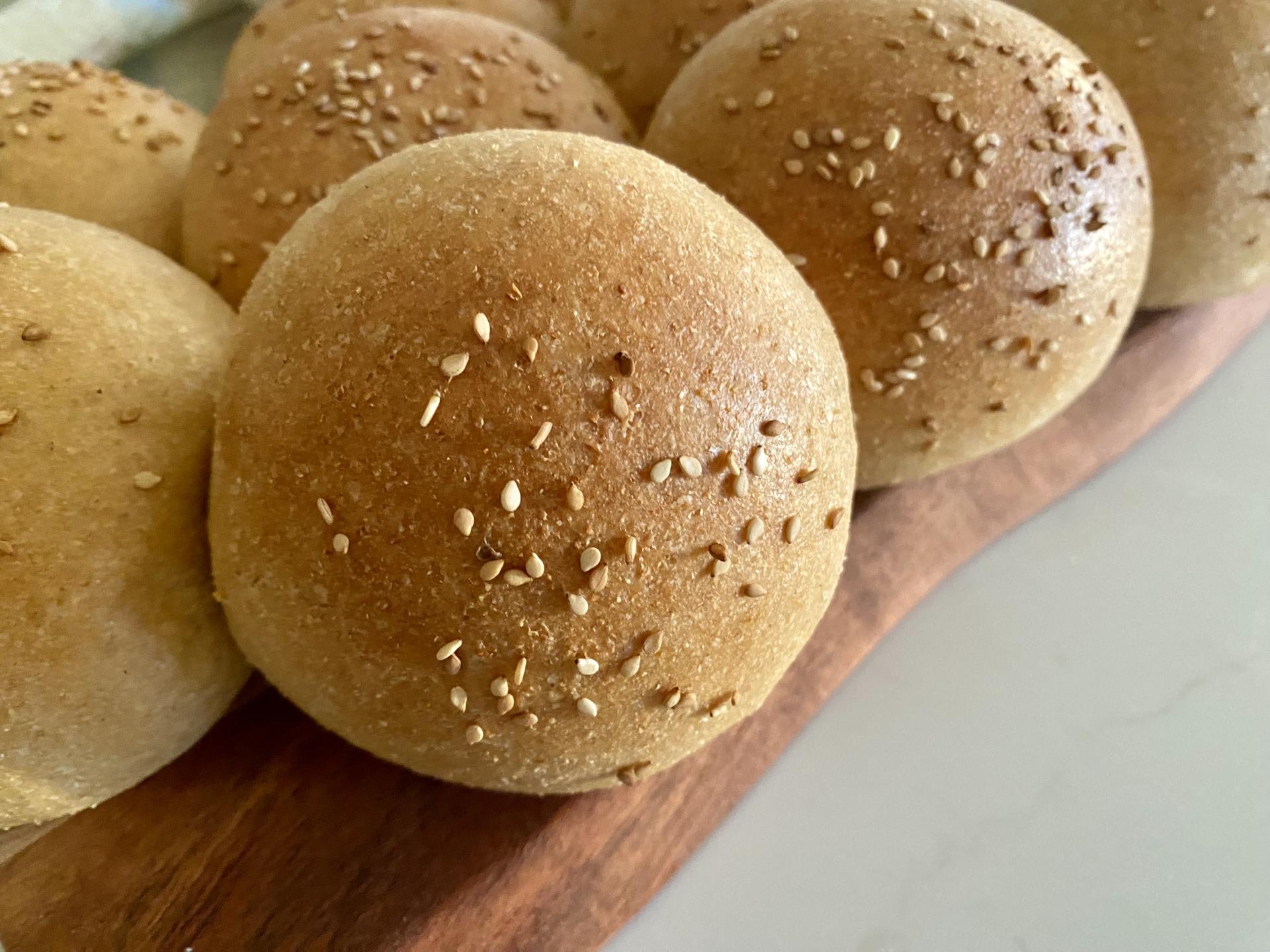
These burger buns are one of my absolute favorite bread products to make. My family generally tries to avoid seed oils and I haven’t yet been able to find a burger bun brand (or many bread brands in general) that does. These buns are great because they are so versatile, relatively full-proof, and can be made in advance and frozen until you need them.
Ingredients
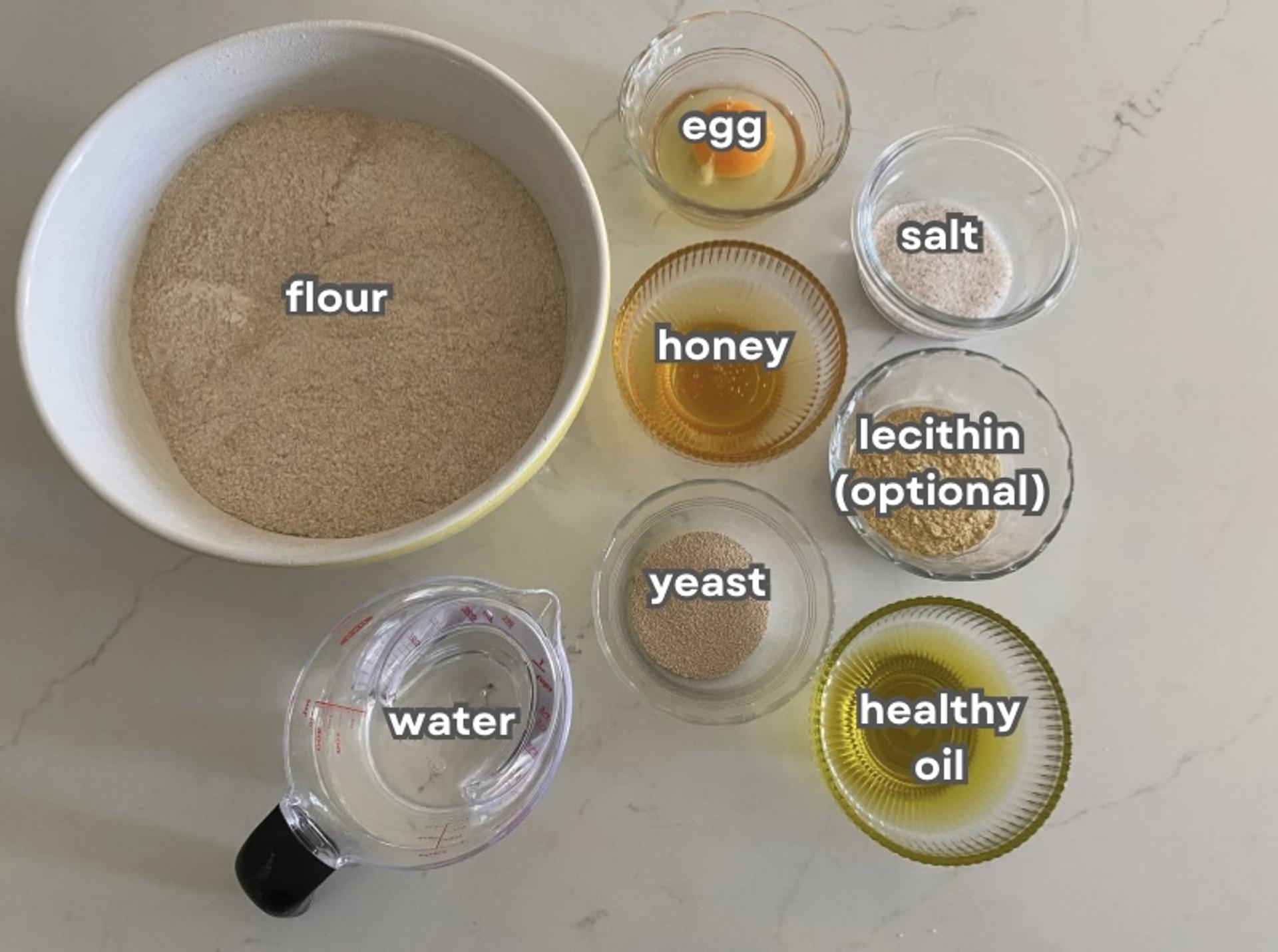
This recipe uses only eight basic ingredients you probably already have on hand and one more specialty ingredient that you’ll only need if you’re freshly milling your flour and that you can leave out if you can’t get your hands on it. To make the best burger buns you’ll need flour–I mill my own because of the amazing health benefits including getting 40 of the 44 essential nutrients (if you want to learn more about milling your own flour check out this post). If you don’t yet mill your own flour, you can use all-purpose flour or bread flour.
You’ll also need salt, yeast, water, an egg, honey, a healthy oil, and sunflower lecithin. If you’re using store-bought flour, you can leave out the lecithin. If you’re using freshly-milled flour, the lecithin adds a very fluffy delicious texture, but you can also leave it out if you struggle getting your hands on it. If you don’t have any and want to try it you can get it from Azure Standard, Bread Beckers, or from Amazon.
Instructions
While they do take a long time to come together, most of the time is spent waiting. The actual hands-on time it takes to make these isn’t more than 30 minutes.
To start, heat up your water (I think it’s easiest to use an adjustable temperature electric kettle set to about 190–this is the one I have) and, if you’re milling your own flour, get that started milling (you will need to mill about 3 cups of wheat berries).
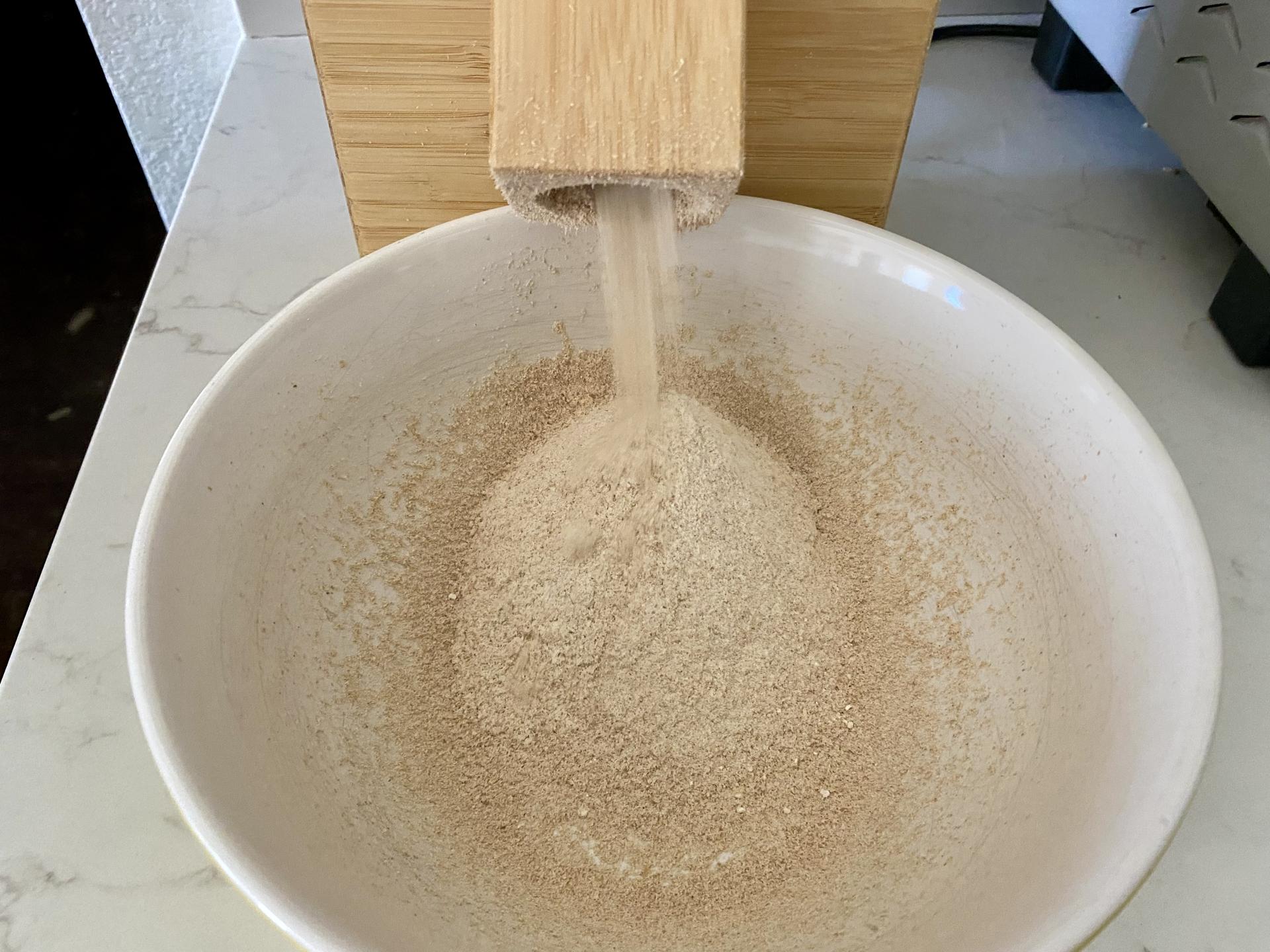
While my flour is milling and my water is warming, I start adding all the other ingredients except the yeast to the mixer. Once the water is warm, add that too and mix the ingredients slightly to incorporate (this does not have to be perfect, you just want to get things going).
Next, while your mixer is on a low speed, add about 2 cups of flour.

Once the flour is incorporated add your yeast. Let the yeast incorporate for about 10 seconds and start adding additional flour until you get the desired consistency for your mixer. I usually start by adding an additional cup and a half right away and then start watching closely to see how much of the remaining cup I will need to add.
The desired consistency of the dough will strongly depend on what type of mixer (or kneading method) you’re using. If you’re using a KitchenAid with a dough hook, you want the dough to clean the side of the bowl. Note this does not mean that there can’t be a little dough residue on the side of the bowl; instead, you want the main dough ball that’s around the hook to not be leaving behind residue as it mixes. A little sticking on the very bottom of the bowl as it mixes is fine; you’re mostly looking at the sides of the bowl. The way the dough hook works generally requires more flour so you will likely end up adding all the flour and might need to add even a little more.
I burned my KitchenAid up pretty quickly after starting to make all my bread products from scratch, so I transitioned to this Ankarsrum Mixer–it’s incredible! If you’re using the Ankarsrum, you don’t need to use the dough hook attachment, instead use the roller and scraper–this way can handle a softer dough (softer dough = softer bun). To see if you’ve added enough flour in the Ankarsrum, pull the roller away from the side into the center of the bowl. If the dough immediately follows the roller to the center–leaving the sides of the bowl–your dough has enough flour. If not, just keep adding small amounts of flour until the dough follows the roller into the center. This is usually about 2 cups for me.
A note about flour amounts: remember the amount of flour needed for a recipe is largely dependent on environmental factors including your elevation, climate, season, temperature, humidity, etc. That means the amount of flour that works for me in Arizona might not be the right amount for you in Florida. When baking any yeasted bread product, you just have to learn what to look for in your dough. This can seem intimidating at first, but it’s really not that bad. Just accept that it may be a bit stressful the first few times you do it, but you’ll get the hang of it pretty quick. I’ve never made a bread that was inedible–dense, for sure (that’s pretty close to the worst case)! You may also need a little extra flour if you’re using store-bought flour.
Once you have the appropriate amount of flour you need to knead the dough. If you’re using freshly-milled flour, you can turn your mixer off and let the dough rest for about 15 minutes before kneading to allow the dough to absorb some water, but this is optional. Whether I do this depends almost entirely on how much time I have.
To knead the dough, turn your mixer on a low to medium speed and let it knead for at least 5 minutes. At this point I like to check the dough. While you generally can’t over knead to the point of ruining your dough, the dough will become tougher with more kneading than is necessary.
To see if your dough has been sufficiently kneaded, I stick with the “window pane” test. I get my hands wet and rip off a small piece of dough. I slowly and carefully start stretching the dough into a rough square to see if I can get the middle to become thin enough to see light through it without tarring. If the dough passes the window pain test, you’re all done kneading. If not turn your mixer back on for a few more minutes until the dough passes.
Generally freshly milled flour will take longer to knead than store-bought flour, though the kneading time will be significantly reduced if you let the dough rest for 15 minutes before kneading the dough as discussed above.
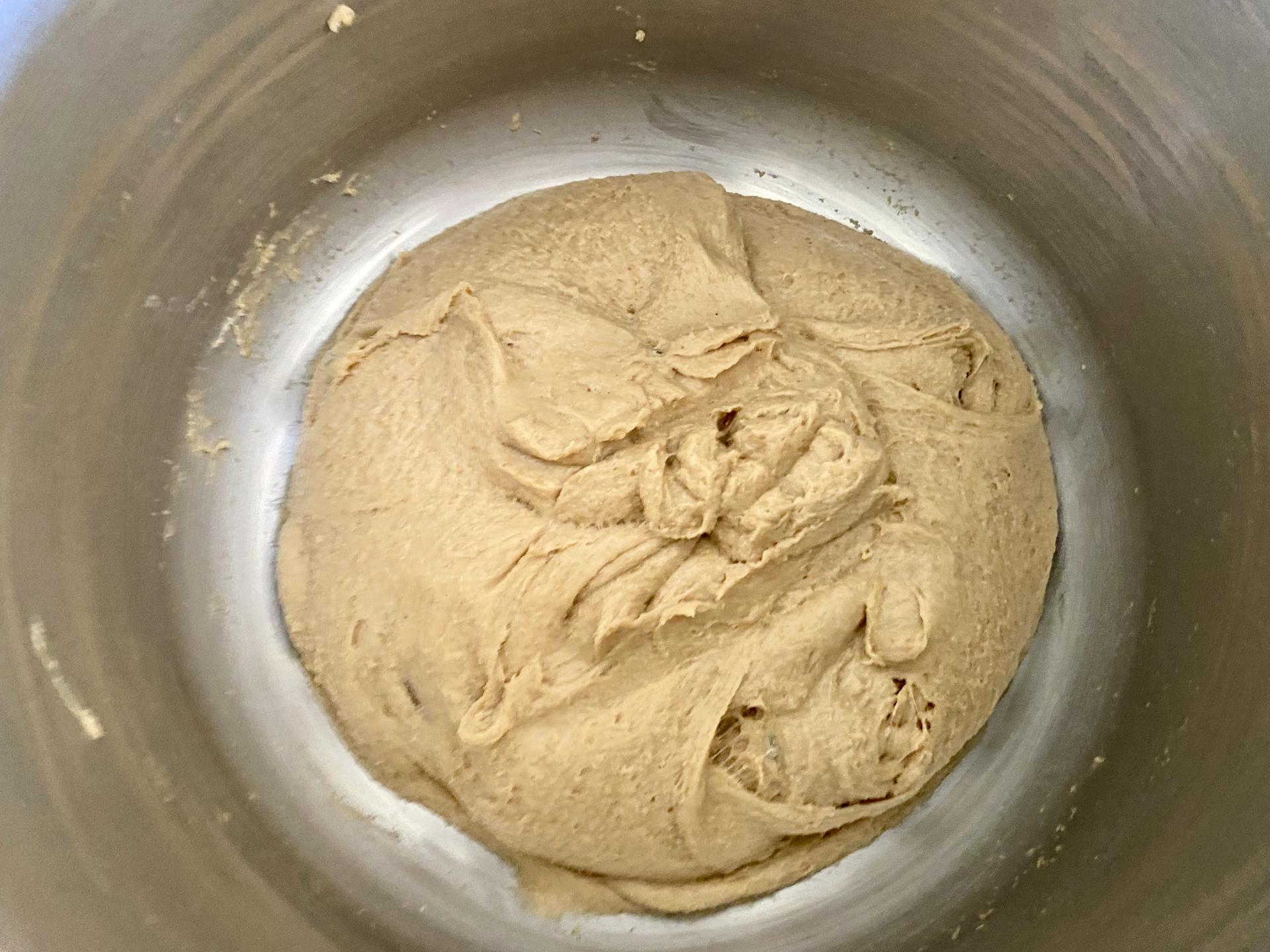
Once the dough is kneaded, gather the dough off of your mixer attachments and the side of the mixer bowl and form a ball. Place the dough ball back in your mixer bowl or in a different bowl, coat lightly with oil, and cover with a lid or a kitchen towel to rise for about one and a half hours or until the dough has doubled in size.
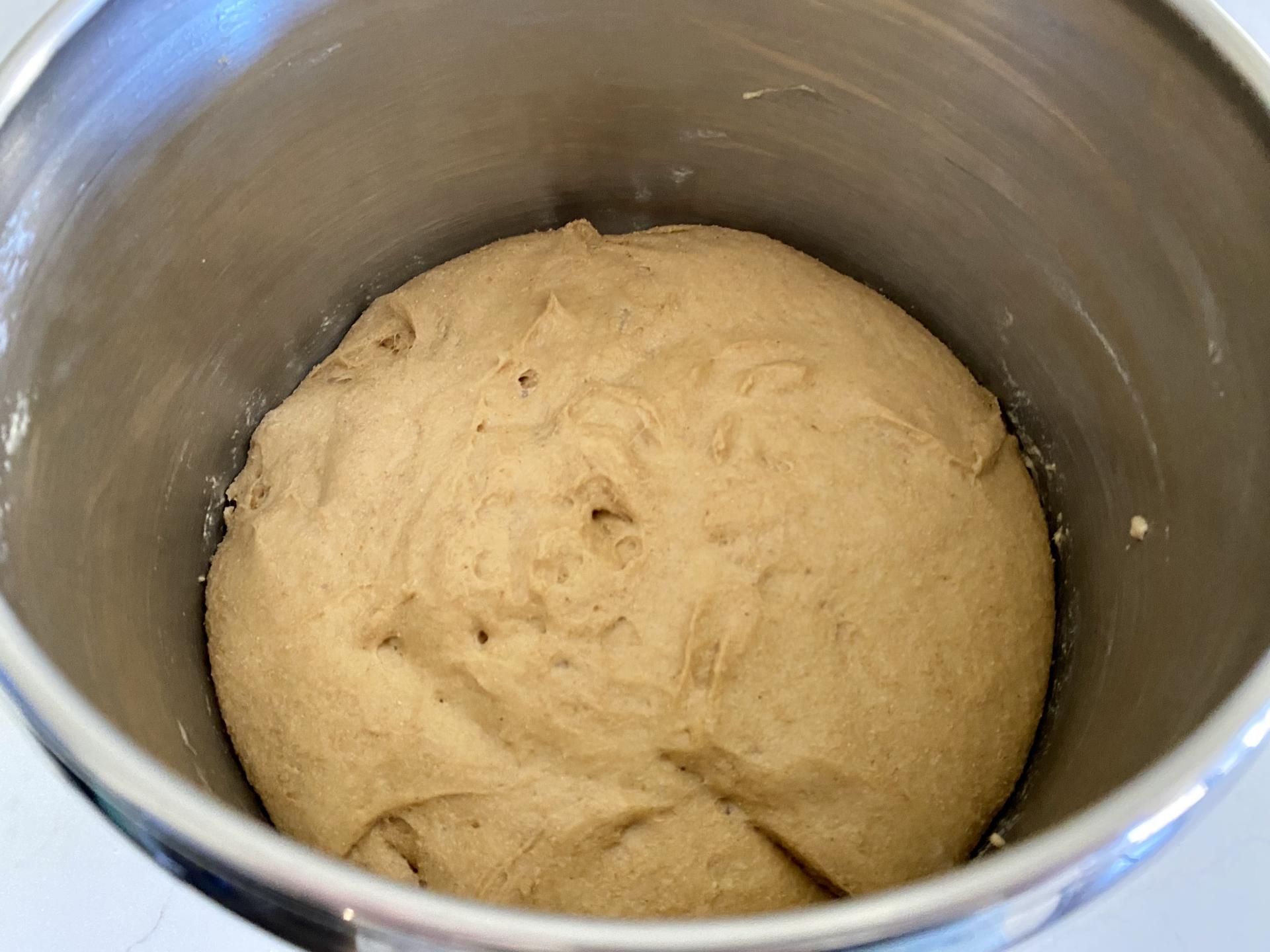
After the initial prove, it’s time to shape your dough. Using a dough scraper or your hands, scrape the dough out of the bowl onto a lightly floured or oiled countertop. Using a kitchen scale, divide the dough into 3 ounce dough balls. If you don’t have a kitchen scale, you can divide the dough into twelve even dough balls–little hands love to help with this job! You should get about 12 dough balls.
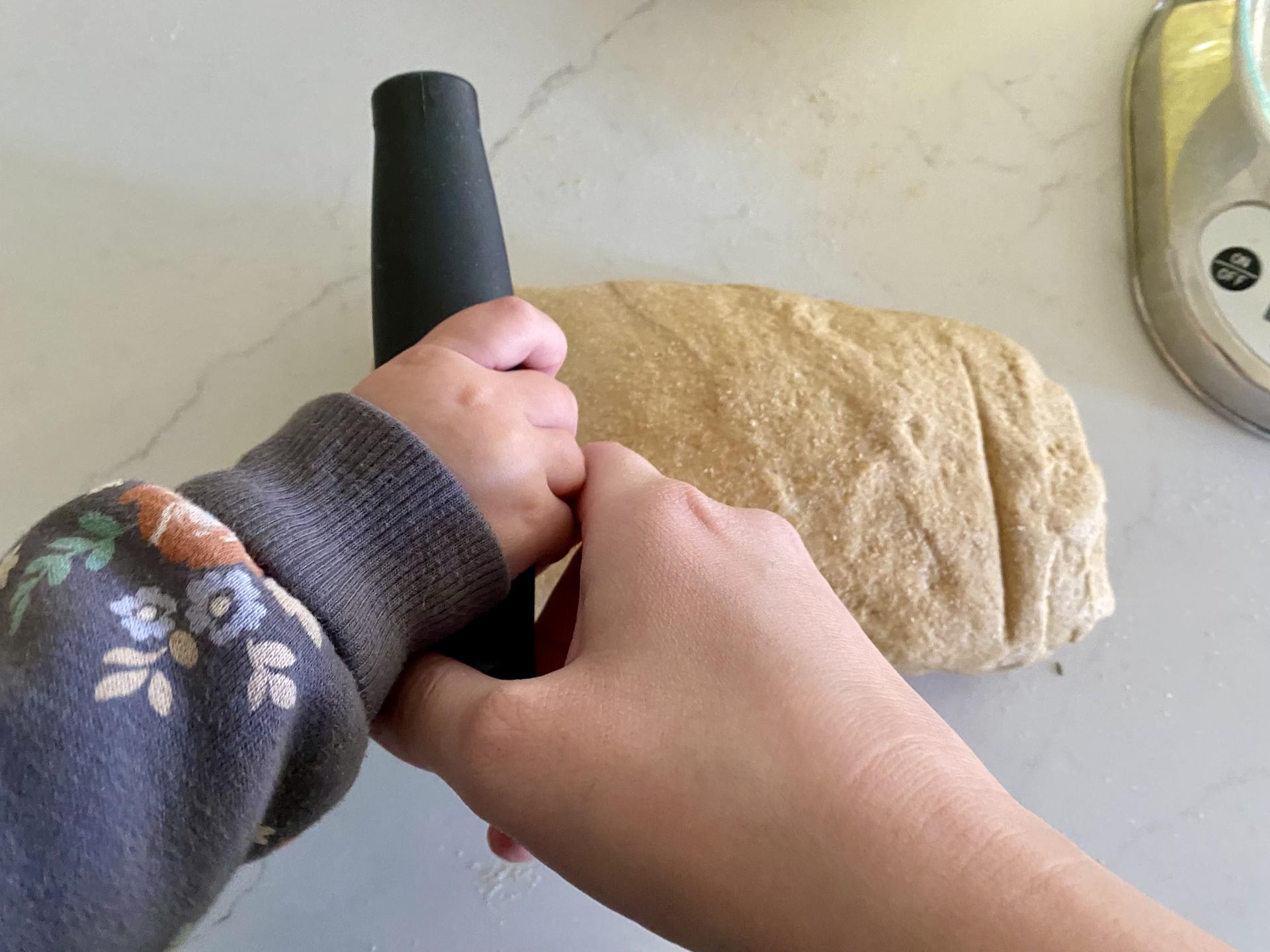
Take a 3 ounce piece of dough and gently start pressing into it like you’re trying to flatten it into a square. Then pull the top of the dough into the center, then the bottom, like you’re folding a piece of paper into thirds.
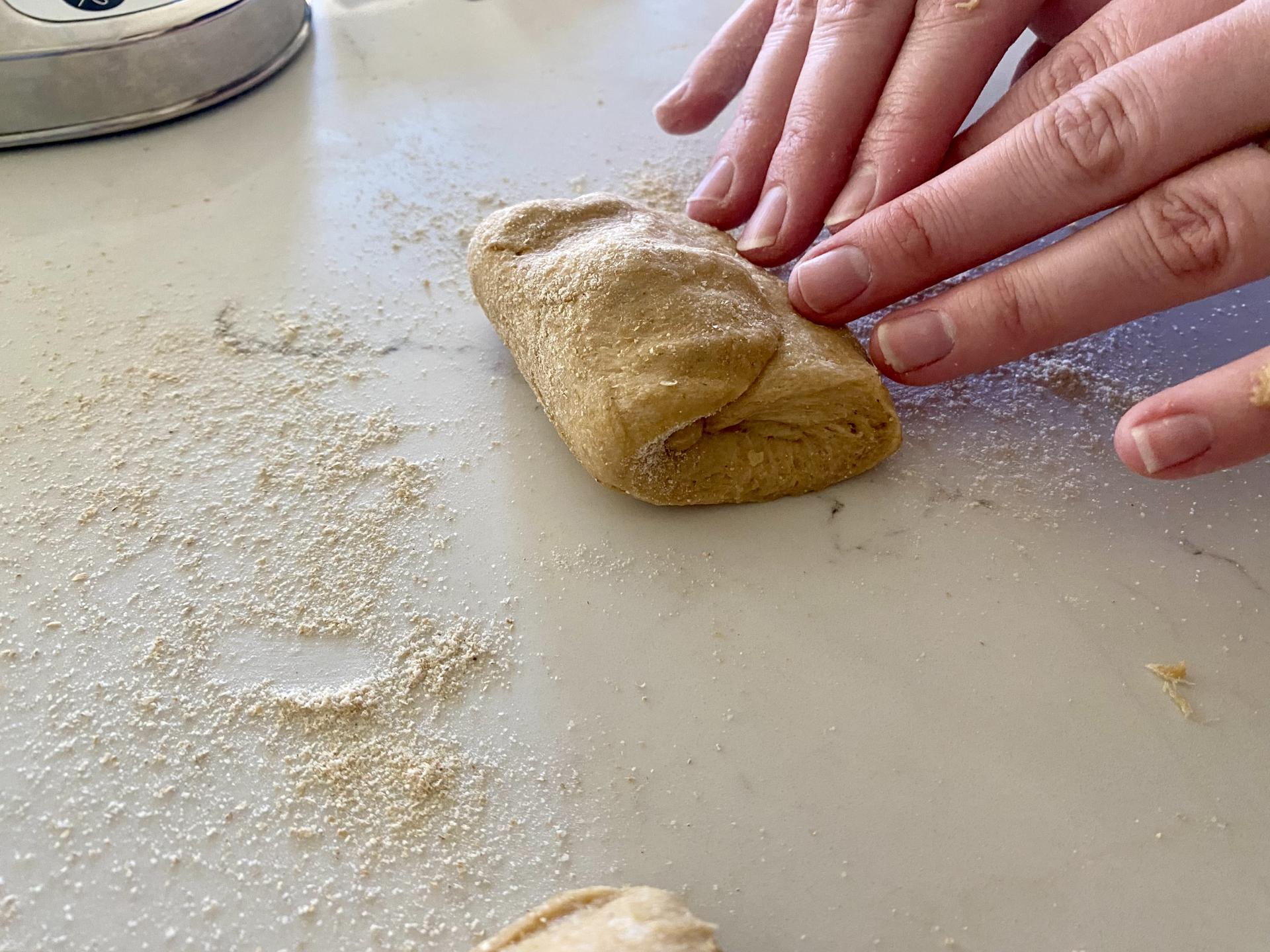
Then gather the sides that have not been folded and fold those over to create a ball shape.

Next, you want to create tension on the top of your balls. This is what allows it to have that beautiful rise and rounded top. To do this, flip the folded dough ball over, cup your hand and place it over the dough ball.
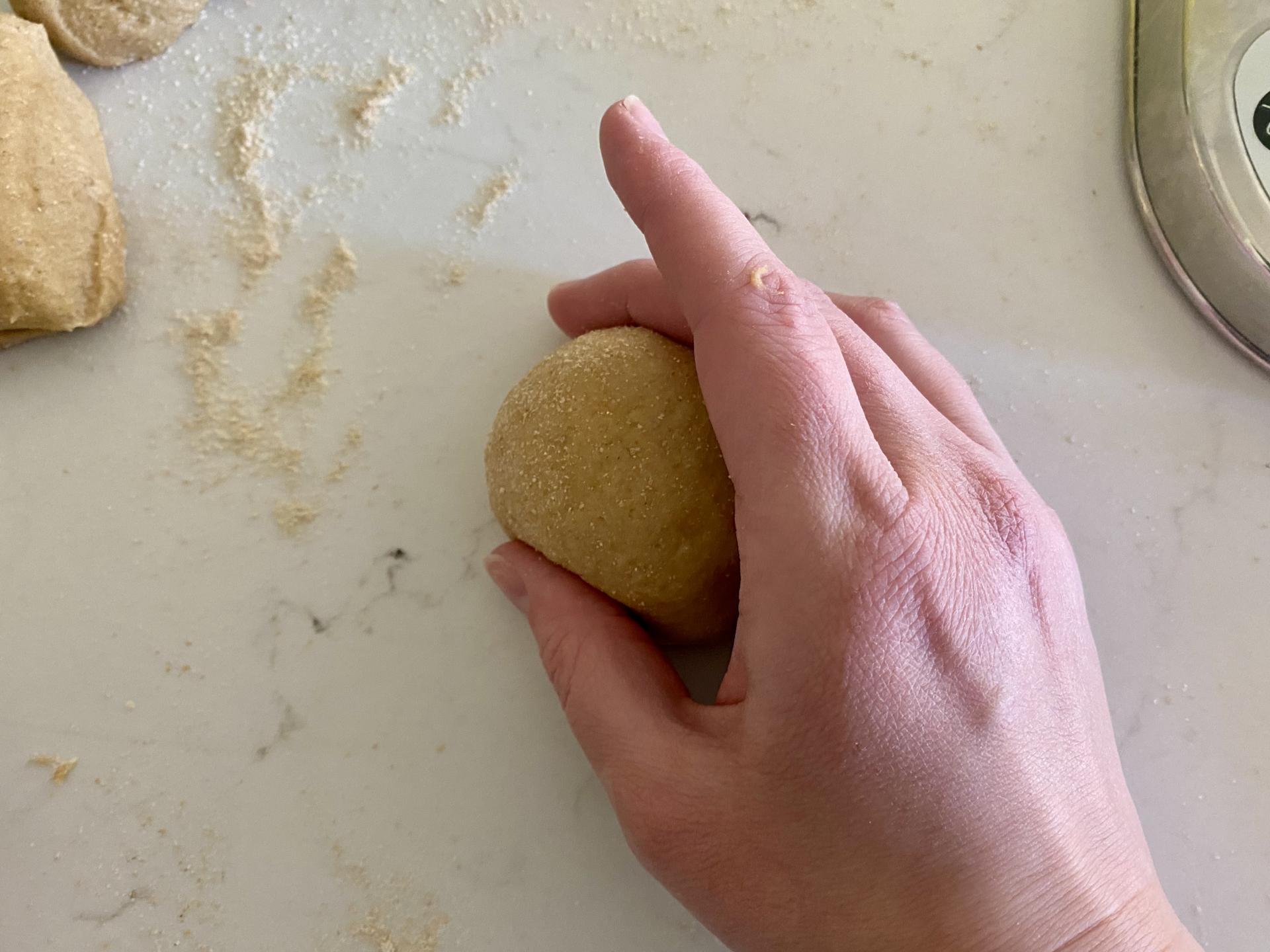
Start quickly rotating the dough ball in a circle while pushing the ball into the counter. This may feel strange at first, but give it a little time and it will become second nature. After a few circles, you’ll feel the dough become a smooth ball–that means you’re done! Move it to a baking sheet and repeat this process with the rest of your dough. If you want a flatter burger bun, you can press the tops down slightly to create more of an oval shape.
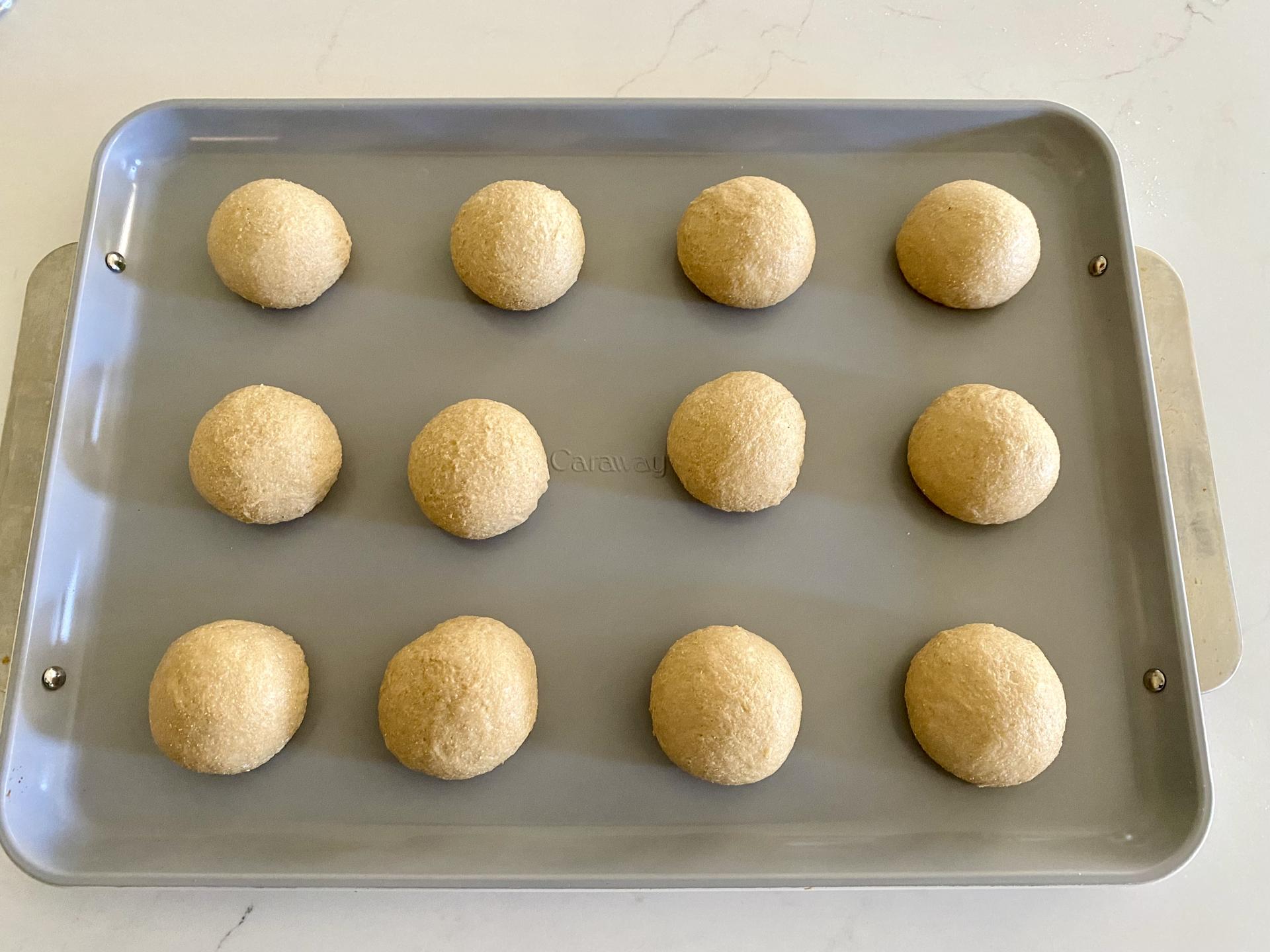
Cover your dough balls with plastic wrap or a kitchen towel and let them rise for a second time. The second rise generally takes about an hour. You want the dough balls to look puffy and generally be about 1.5x bigger.
After about an hour, preheat your oven to 350 degrees. While your oven is preheating, coat your buns with an egg wash. To make the egg wash, whisk together 1 tablespoon of water with one egg yoke. Use a pastry brush or your fingers to spread a thin layer of the wash over the top of your buns. While the egg wash is still wet, you can add garlic granules, poppy seeds, or sesame seeds to the top of your buns if you would like.
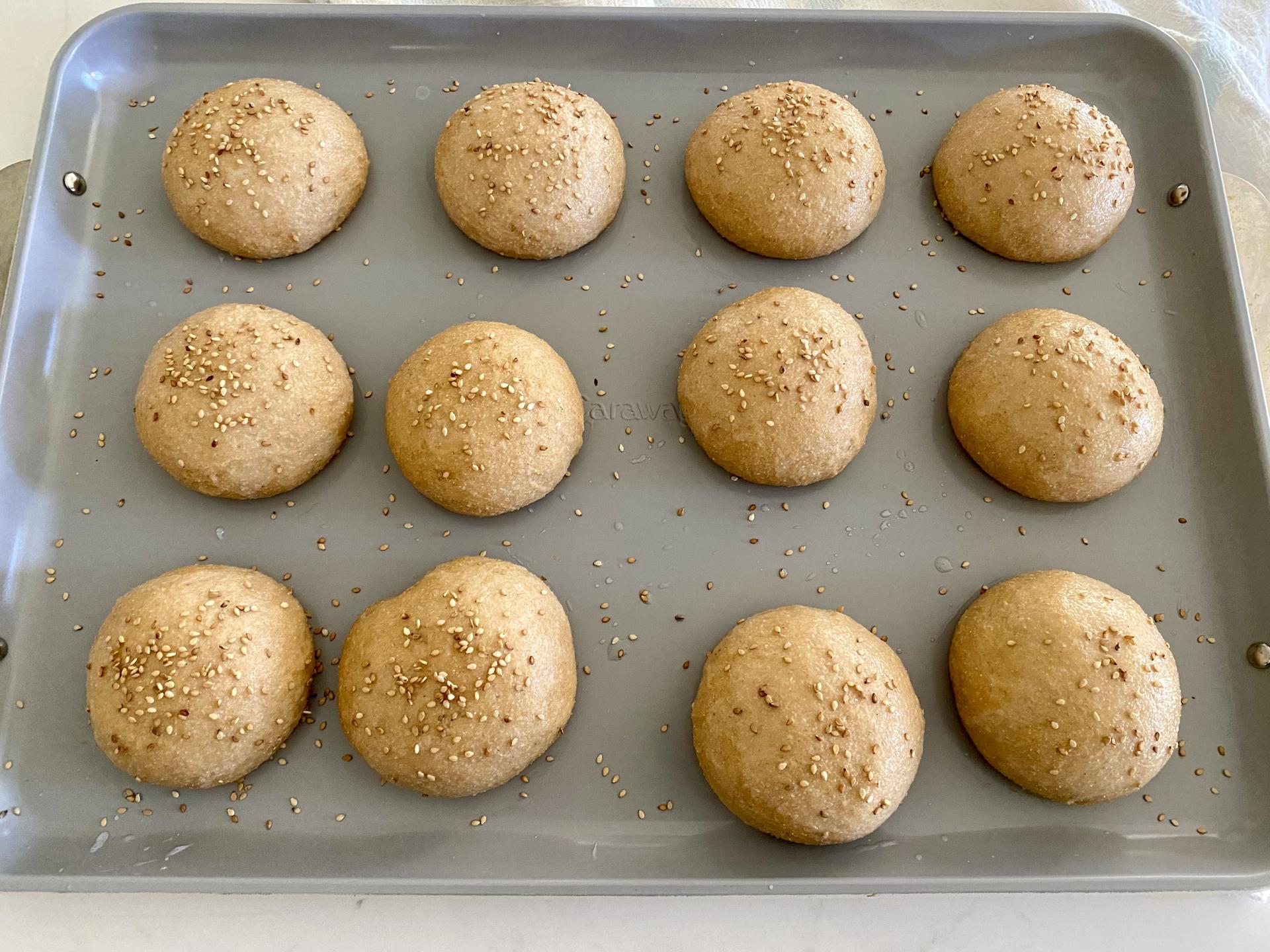
Bake your buns for about 15 minutes or until the internal temperature is about 190. Remove from the oven and let cool. Serve and enjoy!

Notes
- You can store your buns on the counter for up to 3 days. Store them on a cake plate with a lid, on a tray with a bowl overing the buns, or wrapped in a kitchen towel and tucked in a bread box.
- You can also freeze them for up to three months.
- You can also make hotdog buns using this same recipe. To make hotdog buns though, just shape into a hotdog bun shape at the shaping stage of the process. Everything else will be exactly the same!
Love,
this Mama
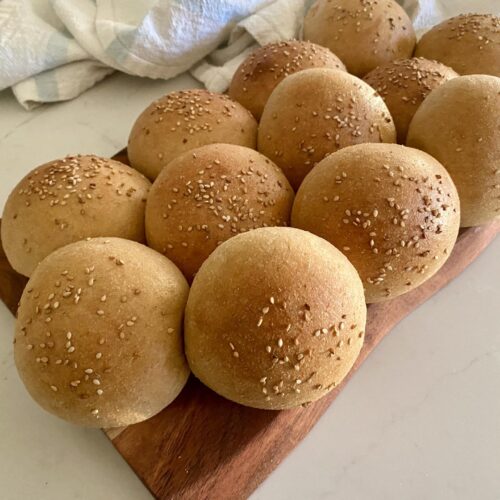
Homemade Seed-Oil Free Burger Buns
Ingredients
- 4-5 cups flour If freshly milled, mill ~3 cups of hard red, or hard wheat berries
- 1½ cups hot water
- ⅓ cup healthy oil I use extra virgin olive oil
- ⅓ cup honey
- 2 tsps salt
- 1 tbsp instant yeast
- 2 tbsp sunflower lecithin optional
- 1 egg
Instructions
- Combine hot water, egg, salt, honey, oil, and lecithin in mixer.1½ cups hot water, ⅓ cup healthy oil, ⅓ cup honey, 2 tsps salt, 1 egg, 2 tbsp sunflower lecithin
- Mix in 2 cups of flour until fully incorporated.4-5 cups flour
- Mix in yeast until fully incorporated.1 tbsp instant yeast
- Add in 2 additional cups of flour, and begin checking your dough and gradually adding more flour until your dough is the appropriate texture (see instructions above for more details).4-5 cups flour
- (Optional) If using freshly milled flour, at this point you can let the dough rest for 15 minutes before kneading.
- Knead the dough on a low to medium speed for 5-15 minutes—until it passes the "window pane" test (see instructions above for more details).
- Place your kneaded dough ball in a lightly oiled bowl, and cover with a damp towel to prove until doubled in size, about an hour and a half.
- Once your dough has doubled, pour it onto a lightly floured surface, and divide into 12 3oz dough hunks.
- Shape each 3oz hunk into a smooth ball (see instructions above for more details).
- Place each ball onto a baking sheet (if your baking sheet isn't non-stick, line with parchment paper first).
- Let the dough balls rise until puffy, and about 1½ times bigger (about an hour).
- Preheat oven to 350°.
- (Optional) Make an egg wash with 1 egg white, and 1 tablespoon of water whisked together. Lightly spread over the tops of the buns. Sprinkle sesame seeds on top.
- Bake for 15 minutes, or until the internal temperature of the buns is about 190°.


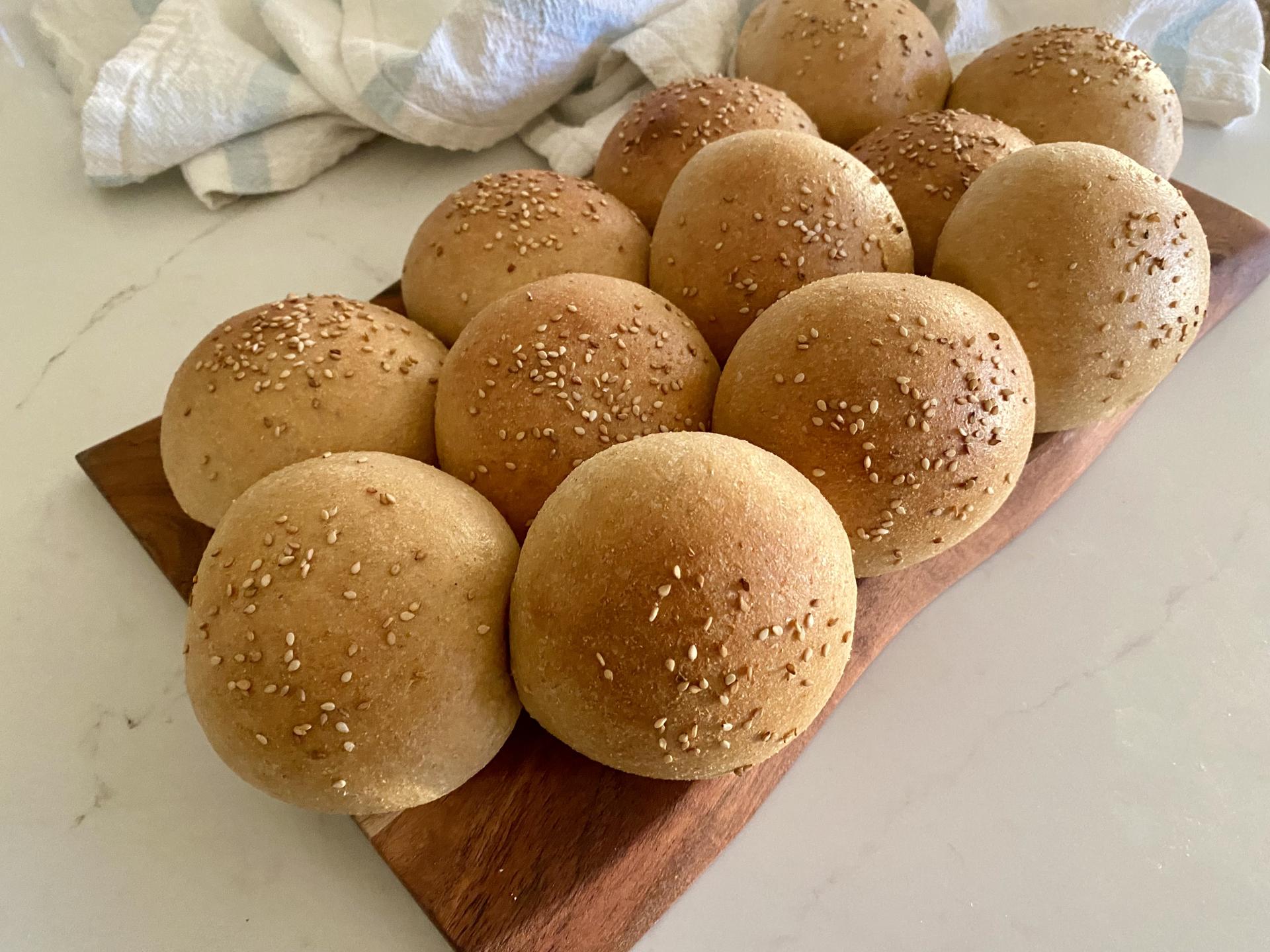
Leave a Reply